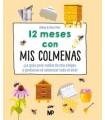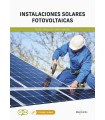FOOD MICROBIOLOGY
Microbiology is the science that studies living beings of very small dimensions, known as microbes or microorganisms. Within that group, some microbes are considered beneficial and others harmful. For example, there are bacteria that are used for the manufacture of yogurt, cheese, wine, beer, etc., such as Streptoccocus thermophilus, Lactobacillus bulgaricus, Saccharomyces cerevisiae, etc. And on the contrary, there are others that cause diseases and poisoning, such as coliform bacteria, salmonella, listeria, clostridium, etc.
In this book we are going to study bacteria, yeasts, molds and viruses, their structure, their types, their applications, the poisoning and problems they can cause. The case of viruses is very special, as we are seeing with Covid-19. We will also study them since they are a problem in some agri-food industries. The subtitle of this book is: Training course. This is so because it can be used as a basis for food microbiology courses. Solved practical exercises are included that can help a lot in the pedagogical work of teachers. It is also a very useful book for all food professionals, laboratories, official bodies, etc.
Detalles del libro
- Año
- 2023 (1ª Edición)
- Nº Páginas
- 194 and 75 black and white and COLOUR (with graphs, diagrams, tables with data of interest, photos).
- Autor
- Antonio Madrid Vicente (Engineer and scientific disseminator).
- Tamaño
- 24 X 17 cms. - Weight: 0,500 Kgrs.
- ISBN
- 9788412643398
ÍNDICE COMPLETO DEL LIBRO:
Chapter 1 FOOD MICROBIOLOGY. 1.- Microorganisms and food. 2.- Beneficial actions of microorganisms. 3.- Harmful actions of microorganisms. 4.- Classification of microorganisms. 5.- Practical exercises. Solutions at the end of the book.
Chapter 2 BACTERIA. 1.- Characteristics of bacteria. 2.- Structure of bacteria. 3.- Reproduction and growth of bacteria. 4.- Formation of spores. 5.- External factors that condition the life of bacteria. 5.1.- Role of enzymes. 5.2.- Role of humidity. 5.3.- Aerobic and anaerobic bacteria. 5.4.- Importance of temperature. 6.- Most common bacteria in food. 7.- Direct and cross contamination of food. 8.- Solved practical exercises. Solutions at the end of the book.
Chapter 3 YEASTS. 1.- Characteristics of yeasts. 2.- Ways of yeast reproduction. 3.- Conditions for yeast development. 4.- Industrial use of yeasts. 5.- Types of yeasts. 6.- Production of alcohol from sugar cane and beets. 7.- Most common yeasts in food. 8.- Practical exercises. Solutions at the end of the book.
Chapter 4 MOLDS. 1.- Characteristics of molds. 2.- Forms of reproduction. 3.- Factors that control the development of molds. 4.- The most common molds. 5.- Practical exercises. Solutions at the end of the book.
Chapter 5 VIRUSES. 1.- Virus characteristics. 2.- Composition of the virus. 3.- Ways of dissemination of the virus. 4.- Viruses and food. 5.- The bacteriophages. 6.- Practical exercises. Solutions at the end of the book.
Chapter 6 SOWING AND IDENTIFICATION TECHNIQUES IN FOOD MICROBIOLOGY. 1.- Basic concepts. 2.- Identification of microorganisms. 3.- Planting techniques. 4.- Sowings in Petri dishes. 5.- Sowing in tube. 6.- Practical exercises. Solutions at the end of the book.
Chapter 7 POISONINGS AND FOOD-BASED DISEASES CAUSED BY MICROORGANISMS. 1. Introduction. 2.- Salmonellosis. 3.- Typhoid fever. 3.1.- Mayonnaise and the risk of salmonellosis. 4.- Escherichia Coli. 4.1.- Treatment in coli infection. 4.2.- Recommendations to avoid E. Coli infections. 5.- Listeriosis. 6.- Clostridium botulinum (botulism) and Clostridium perfringens (gas gangrene). 7.- Dysentery. 8.- Brucellosis (Malta fever). 9.- Streptococci that produce diseases. 10.- Cyclospora cayetanensis (traveler's diarrhea). 11.- Foodborne diseases. 12.- Conclusions. 13.- Practical exercises. Solutions at the end of the book.
Chapter 8 POISONING BY PARASITES. 1.- Parasites. 2.- Fascioliasis. 2.1.- Symptoms of fasciolasis. 3.- Anisakis. 4.- Poisoning by heavy metals. 5.- Practical exercises. Solutions at the end of the book.
Chapter 9 HYGIENE, CLEANING AND DISINFECTION IN THE FOOD CHAIN. 1.- Hygiene and food safety. 2.- Types of cleaning. 3.- Cleaning phases. 4.- Properties of cleaning products. 5.- Caustic soda (bleach). 6.- Other cleaning products. 7.- Disinfection. 8.- Disinfectant products. 9.- Strains of resistant microorganisms. 10.- Cleaning and disinfection in industries, warehouses and distribution centers. 11.- Cleaning equipment. 12.- The soap. 13.- Detergents. 14.- Chlorine and sodium hypochlorite. 15.- Practical exercises. Solutions at the end of the book.
Chapter 10 AUTOMATIC CLEANING SYSTEMS IN THE AGRIFOOD INDUSTRIES. 1.- On-site cleaning of equipment and facilities. 2.- Types of automatic cleaning installations. 3.- Equipment that makes up the CIP cleaning facilities. 4.- Sequence of cleaning pumps, valves, pipes and tanks. 5.- Practical exercises. Solutions at the end of the book.
Chapter 11 EQUIPMENT USED IN MICROBIOLOGICAL ANALYSIS. 1.- Equipment used in microbiological analysis. 2.- Petri dishes. 3.- Culture oven. 4.- Equipment to count colonies. 5.- Culture media. 6.- Agar and tryptone. 7.- Autoclaves for sterilization. 8.- Electromagnetic stirrer. 9.- Practical exercises. Solutions at the end of the book.
Chapter 12 METHODS OF MICROBIOLOGICAL ANALYSIS. 1.- Microbes and food. 2.- Food analysis methods. 3.- Total number of revivifiable aerobic microorganisms. 4.- Aerobic bacteria. 5.- Fecal bacteria (Coliforms). 6.- Fecal streptococci. 7.- Sulfite-reducing clostridia. 8.- Salmonella research. 9.- Shigella research. 10.- Practical exercises. Solutions at the end of the book. Chapter 13 Principles and guidelines for the application of microbiological risk assessment according to FAO. 1. Introduction. 2.- Microbiological risk assessment. 3.- Scope of application. 4.- Definitions. 5.- General principles of microbiological risk assessment. 6.- Guidelines for the application. 6.1 General considerations. 6.2 Statement of purpose of risk assessment. 6.3 Hazard identification. 6.4 Exposure assessment. 6.5 Hazard characterization. 6.6 Risk characterization. 6.7 Documentation. 6.8 Reassessment. 7.- Practical exercises. Solutions at the end of the book. Annex 1 Regulation 2073/2005 of the Commission, relative to the microbiological criteria applicable to food products.
Annex 2 BOOKS ON GASTRONOMY, NUTRITION AND FOOD.
Annex 3. ANWERS TO PRACTICAL EXERCISES.












